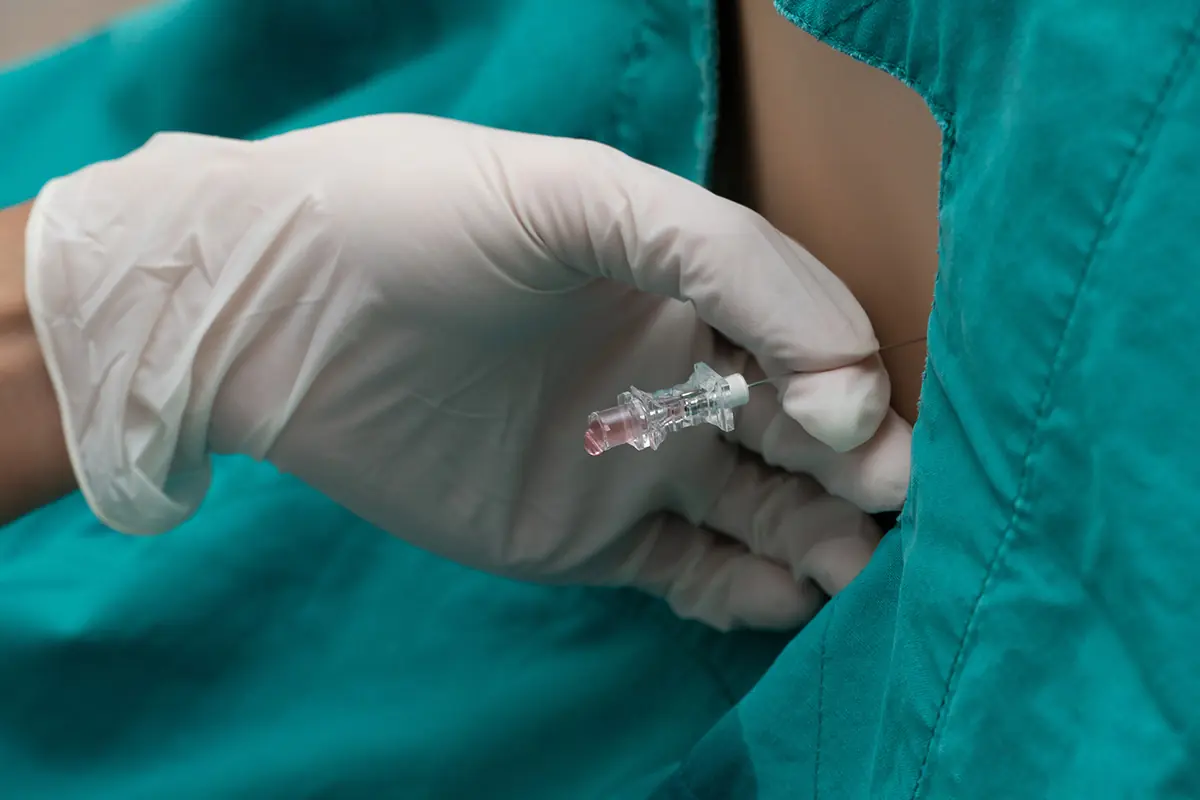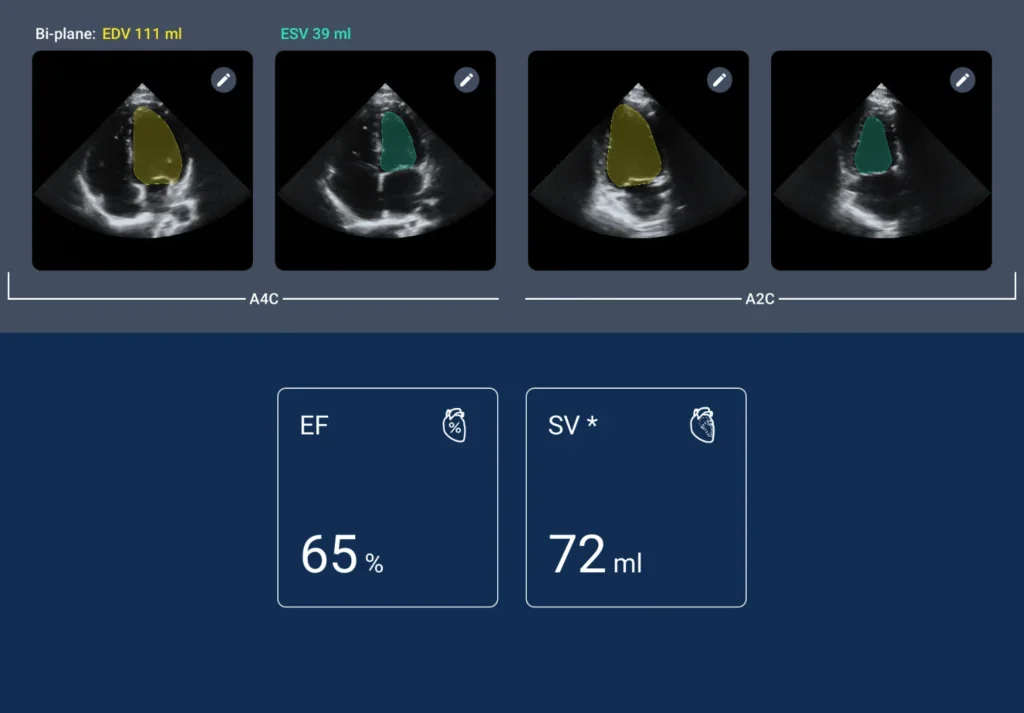How to Choose a Bladder Scanner: A 4-Point Checklist for Clinical Leaders
Table of Contents
In our previous guide, we explored the technology behind modern bladder scanners, their use cases in preventing unnecessary catheterizations, and the role of AI in improving care. You already know why a bladder scanner is an essential tool for evidence-based nursing. Now, the question is, which one is the right fit for your institution?
Choosing a bladder scanner isn’t just about buying a piece of equipment within your budget; it’s a strategic investment in patient safety, nursing workflow efficiency, and your organization’s bottom line. An inaccurate or unreliable device can lead to poor clinical outcomes and frustrated staff, while a versatile and durable system can help your team improve care for years to come. This guide breaks down the key points to consider when making your decision.
Key Evaluation Criteria for Your Next Bladder Scanner Beyond Pure Cost
A truly effective bladder scanner must balance advanced technology with real-world usability. Here are the four critical areas to evaluate.
1: Clinical Accuracy and Confidence
At the end of the day, you need a number you can trust that is reproducible by any/all nurses. An overestimated bladder volume might lead to an unnecessary and invasive catheterization, increasing the risk of a CAUTI.1 An underestimated volume could cause a missed diagnosis of urinary retention, leading to serious complications.
- What to Look For:
- Published Accuracy Specs: Don’t settle for vague claims. Look for precise, clinically validated accuracy. For example, Kosmos Bladder offers an accuracy of ±3% mL for volumes greater than 100 mL and ±3 for volumes less than 100mL.2 This represents a significant improvement over many competitors, whose accuracy is represented as ±7.5% mL on volumes greater than 100 mL and ±7.5 on volumes less than 100 mL.3
- Pre- and Post Void Workflows: A more comprehensive scan leads to a more accurate measurement. Systems that capture both transverse and sagittal views may provide a more complete picture of the bladder’s structure than single-plane methods alone.
- AI-Assisted Workflows: Modern AI algorithms can automatically identify the bladder, trace its boundaries for a precise calculation, and guide the user to the optimal position, reducing guesswork and user variability. For example, Kosmos Bladder has real-time bladder targeting that ensures the bladder is centered on the screen for the user, aiding the user in obtaining a more accurate scan.
- Ease of Disinfection: Device design is a critical component of any infection control strategy. Kosmos is designed with minimal surfaces for easy cleaning and is compatible with your hospital’s existing disinfection workflows. For routine, low-level disinfection, the probe is compatible with a range of common germicidal wipes, including Sani-Cloth® and CaviWipes™. For high-level disinfection (HLD), the system is compatible with automated reprocessors like Trophon 2, as well as other validated solutions such as Tristel Duo ULT™. This broad compatibility ensures that the device can be safely and effectively integrated into your institution’s established cleaning and disinfection protocols.
2: Workflow, Automation, and Ease of Use
In a busy clinical environment, a device with a steep learning curve or a clunky workflow will be underutilized as well as more prone to cause patient safety concerns, especially at a time when nursing turnover is high, and new grads start on Med/Surg floors.4 A tool is only effective if your staff consistently uses it. The goal is a seamless process that provides fast, reliable results without disrupting patient care.
- What to Look For:
- Dedicated Workflows: The device should have simple, dedicated modes for common tasks, such as Pre-Void and Post-Void measurements.
- Automated Calculations: The best systems don’t just show you an image; they automatically calculate the volume in real-time. This eliminates the need for manual outlining and ensures consistency across all users.
- Real-Time References: Look for systems that provide on-screen prompts and visual aids to help users position the probe, ensuring an optimal scan.
3: Reliability and Total Cost of Ownership
The initial purchase price is only part of the story. The hidden costs of downtime, repairs, and premature replacement can quickly erase any upfront savings. Reliability is a direct reflection of the device’s engineering and the manufacturer’s commitment to quality.
- What to Look For:
- Probe Design: Many older or competing scanners use mechanical “wobbler” probes with moving parts that are prone to failure over time. A modern phased array probe uses electronic steering with no moving parts, making it more durable, silent, and resistant to motion artifacts.
- Durability: The device should be built to withstand the rigors of a hospital environment. Look for military-grade construction and testing against drops, shock, and temperature changes. Compatibility with low and high level disinfection is also related to durability.
- Warranty: A long, comprehensive warranty is a clear indicator of a manufacturer’s confidence in its product. The Kosmos platform by EchoNous is proudly made in the USA and backed by an industry-leading 5-year warranty with no fine print, and an expert US-based service team.
4: System Versatility and Future-Proofing
Your clinical needs today might be different tomorrow. Buying a single-function device can lead to owning multiple systems from different vendors, which complicates training, servicing, and purchasing. A versatile platform offers a better return on investment and prepares you for the future.
- What to Look For:
- All-in-One Capability: Can the device do more than just scan bladders? A point-of-care ultrasound system like Kosmos can function as a dedicated bladder scanner but can also expand into a full, AI-powered POCUS solution for applications like ultrasound-guided vascular access, cardiac exams, and more. This consolidation saves money and simplifies workflows.
- Flexible Form Factor: A device that can easily convert from a cart-based system to a handheld or tabletop unit offers ultimate flexibility. The Kosmos platform is a unique solution that enables this on/off-cart capability, complete with extended battery life and multiple probe ports.
- Be aware of contraindications
- Pediatrics: Many bladder scanners have reduced accuracy when it comes to pediatric use. Make sure your bladder scanner is not contraindicated for this specific population.
- Pregnancy and perinatal use: Most bladder scanners are contraindicated for use in pregnancy when you read the fine print. Verify your needs versus the device you’re evaluating.
Consider These Questions for Comparing Bladder Scanners
As you evaluate your options, use these questions to guide your conversations with vendors:
- What is the device’s published volume accuracy (e.g., ± mL or ± %)? Is it clinically validated?
- Does the system use single-plane or bi-plane imaging to calculate volume?
- How does the system use AI to simplify the workflow and ensure accurate measurements?
- Does it utilize DICOM and integrate with EHR?
- What kind of probe technology does it use—mechanical or a solid-state phased array?
- What is the warranty period, and what exactly does it cover?
- Can this device be upgraded or expanded for other clinical applications like POCUS or vascular access in the future?
- What is the learning curve?
The Kosmos Difference: Accuracy, Reliability, and All-in-One Functionality
Choosing the right bladder scanner is a decision that impacts patients, nurses, and hospital administrators alike. It requires a thoughtful evaluation of accuracy, workflow, long-term reliability, and future versatility.
Kosmos Bladder was designed from the ground up to excel in these four areas, offering a next-generation solution powered by advanced AI. It delivers clinically validated accuracy in a reliable, American-made device that can grow with your needs, from a dedicated bladder scanner to an all-in-one POCUS platform.
To see how Kosmos Bladder can meet your organization’s needs and empower better care connect with a clinical product expert or request a personalized demo today.
References
- Palese A, Buchini S, Deroma L, et al. The effectiveness of the ultrasound bladder scanner in reducing urinary tract infections: a meta-analysis. J Clin Nurs. 2010;19(21-22):2970-2979.
- EchoNous, Inc. EchoNous Introduces Kosmos Bladder: Unmatched Accuracy and AI-Driven Precision Redefine Bladder Volume Scanning. PR Newswire. Published January 28, 2025. Accessed September 12, 2025. https://www.prnewswire.com/news-releases/echonous-introduces-kosmos-bladder-unmatched-accuracy-and-ai-driven-precision-redefine-bladder-volume-scanning-302361680.html
- Verathon Inc. BladderScan i10 Brochure. Verathon Inc; 2022. Accessed September 12, 2025
., See page 3 of 8. https://www.verathon.com/sites/default/files/2022-02/0900-5080_Rev-02_i10_Brochure_WEB.pdf - Govindarajulu US, Stillo M, Goldfarb D, Matheny ME, Resnic FS. Learning curve estimation in medical devices and procedures: hierarchical modeling.Stat Med. 2017;36(17):2764-2785. doi:10.1002/sim.7309




